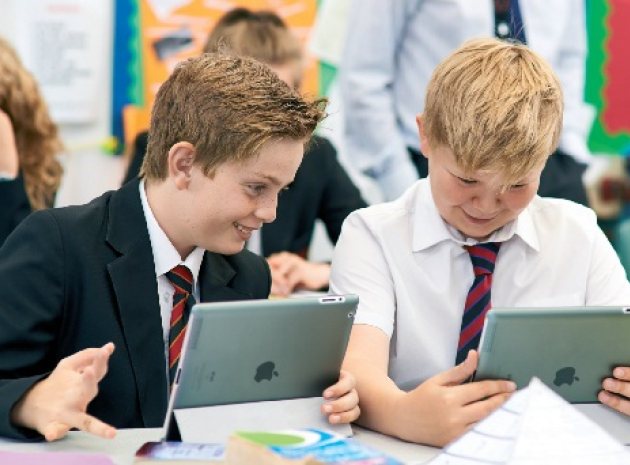The first step towards keeping young people safe online is recognising that it’s little different from protecting them in the physical universe, says Geraldine Bedell…
The last major piece of legislation designed to safeguard children and young people, the Children Act, was passed in 2004. Facebook registered its domain name in 2005. Much of what makes young people’s lives meaningful – their life online – exists outside the law, without the special protections for children we otherwise take for granted. Mobiles and social media have changed children’s lives dramatically in the last ten years, leaving teachers and parents alike feeling that it is much harder to protect young people. At the same time, technology has broken down the barriers between home and school, meaning that a child who is being bullied in the playground is no longer safe when he gets home and smartphones and mobiles threaten to bring the outside world inside the school gates. Parents still have a right to expect their children to be safe at school, but it’s easy for teachers to feel overwhelmed, when the environment they are supposed to be monitoring is so uncontrollable. Now and then, it is still possible to find internet safety advice for parents that recommends keeping the computer in the living room, with the idea that they can monitor what their children are doing. This is laughably hopeless when children are communicating with other people - perhaps strangers, perhaps not – while playing video games, and when 1500 new apps are launched every week. By the time adults have caught up with the latest instant messaging craze, children are quite likely to have moved on. Just as the barriers between home and school are breaking down, the divisions between offline and online are eroding. A young person who has an eating disorder is quite likely to be reinforcing and aggravating her behaviour by visiting pro-anorexia websites. A teen relationship will now almost certainly involve electronic communication, perhaps sexting. In the past, parents and teachers could (up to a certain age, anyway, anyway) control many of the experiences confronting young people. It’s possible that adults were always less in charge than we thought, but on the whole there was a fairly justified sense of being in control. What is frightening now is that anything – anything – is two clicks away from any child. They don’t even have to seek out pornography or violence: all it takes is for someone else to show it to them in the playground. How on earth are teachers to respond to this assault of illegal images, violent extremism, bullying and trolling in their classrooms? The first thing that we need to recognise is that, when it comes to the internet, we know very little about the relationship between risk and harm. To be sure, there’s a blizzard of statistics about the percentages of children who are talking to strangers online or receiving sexual images. But as the LSE’s Sonia Livingstone, probably the foremost researcher in the field, points out, these surveys almost never ask children what they actually saw, or (if indeed this can be asked) whether it harmed them. We simply don’t know to what extent this exposure is causing harm – not least because psychological harm is complicated by a lot of other factors, to do with the vulnerability or resilience of the individual child and the context in which the exposure takes place. Still, it would be an extremely brave person who would claim that there is no specific online harm. Sonia Livingstone’s own EU wide research found that 14% of 9-16 year-olds who are online have seen images that are ‘obviously sexual – for example, showing naked people or people having sex.’ Of these, one in three said they were bothered by what they saw, and half of those were fairly or very upset. Of the 9% who had met an online contact offline in the past year, one in six were bothered by what happened, and about half of those were fairly or very upset. There is, unfortunately, a growing body of evidence to suggest that young people who are vulnerable offline tend to be vulnerable online. And the issue is further complicated by the fact that doing almost anything online these days entails risk (to post content, you must supply personal details; to make new contacts, you must communicate with ‘strangers’). Only a Luddite would suggest that there are no beneficial aspects to the internet and that young people should avoid all such risks. So the only reasonable conclusion is that while there are things that can (and should) be done to mitigate risk, it can’t be eliminated. As in the offline world, the key to helping the internet work for children and young people is to equip them to deal with risk and be resilient. Recent research carried out by the Oxford Internet Institute and The Parent Zone shows that intense monitoring of young people’s online activities is counter-productive. It doesn’t make young people safer. What does work is what works generally when it comes to adults and young people: unconditional regard (valuing young people for themselves) and a genuine, engaged interest in their points of view. The young people who had that kind of parenting were both more creative and confident and more resilient online. As schools increasingly find themselves in the forefront of dealing with emotional and physical risk, there is a growing recognition that everyone concerned with children needs to focus on resilience. Even so, there needs to be much wider discussion of how to foster it online. The digital world is so pervasive that building online resilience takes concerted action – from teachers, social workers, police officers and parents. The answers aren’t particularly easy: unfortunately, the annual talk on Esafety is headed the way of the computer in the living room. It’s no longer about the devices and the settings; the issues are bigger than that and have to be addressed holistically. It’s not good news that the children who are vulnerable offline are often vulnerable online, either for them or for those who are struggling to help them. (We should not, though, jump to conclusions: the internet may be a refuge for some.) Schools and parents need to share the responsibility. To that end, we at The Parent Zone have created something called Parent Info with CEOP (the Child Exploitation and Online Protection command of the National Crime Agency). This is a range of articles and videos for parents that can be hosted on school websites. The content includes everything from grooming and pornography through sexting and self-harm to body image and the importance of STEM subjects. Its aim is to help parents encourage their children to be creative, confident and safe online. Online safety has – finally – become a statutory requirement in schools as part of the new computing curriculum, unfortunately just at the moment it is becoming obsolete. As the barriers between digital and everything else erode, our best hope of reducing harm online is to teach children to be alert, digitally literate, confident and resilient. Just like in what we used to call the real world, then.
about the author
Geraldine Bedell is an author, journalist and social entrepreneur, and director of The Parent Zone. The Parent Zone focuses on the impact of digital technology on families. The organisation runs Parenting in The Digital Age training for teachers, supplies educational materials on internet safety and with CEOP, part of the National Crime Agency, has launched Parent Info, an online resource that can be hosted on school’s websites, aimed at building children’s digital resilience.









